Ijen is an active volcano on the island of Java in Indonesia. But you won’t find lava in the center of the volcano: instead, the largest acid lake in the world is in the crater. Despite the fact that the volcano constantly spews sulfur vapor, the turquoise lake is filled with a mixture of sulfuric and hydrochloric acids, and being a miner in the area is considered the most dangerous job in the world, Ijen attracts countless tourists every day. Climbing the volcano starts late at night so that tourists have time to see the blue flames, or, simply put, sulfur vapor, which glows in the dark when oxidized. We tell you how to conquer this place.
Contents
When to Go
Ijen can be climbed at any time of the year, the exceptions being bad natural conditions or eruptions of neighboring volcanoes. Ijen is also an active volcano, but the last time it erupted was more than 20 years ago. The volcano’s activity indicators are monitored daily by volcanologists, so access to the volcano is closed in case of any seismic abnormalities.
Budget
Costs depend on your choice in favor of the self-organization of the tour or the services of a guide. To get to the base camp of the volcano on your own, you need to take into account a lot of nuances, and it is forbidden to climb Ijen without a guide in any case. If you find a local guide, you will get a tour just for you and your friends at a lower price than international travel agencies. On average, the whole package, including transportation, food, and climbing, costs about $110, or, in the case of local guides, about $80.
If you decide to plan the whole tour on your own, don’t forget to take warm clothes, a flashlight, and a gas mask. If the climb is organized by a guide, he will prepare everything you need. It’s not hard to find local guides: there are many Facebook groups for foreigners living in Bali as well as locals. Try writing a post in the Ubud community group.


Ijen Volcano Route and Hike
Most of the travelers start their journey in Bali. Around six in the evening, a car usually picks people up from Ubud or other spots in the south of Bali and takes them to the westernmost part of the island, Gilimanuk port. The drive takes about six hours, depending on how far the starting point is from the west of Bali. Around midnight, you’ll arrive at the port where ferries depart regularly for the east coast of Java—Banyuwangi. It won’t take more than 30 minutes to cross from west Bali to east Java.
The main camp at the foot of the Ijen volcano is 20 kilometers from the port. The locals have everything well organized: in Java, you will already have a Jeep waiting for you, dinner in a local restaurant before going to the camp, dry rations before the ascent, and breakfast after it. You’ll also be provided with flashlights and gas masks, which will come in handy when you approach the crater itself.
At one o’clock in the morning, the climbing begins. The temperature drops a lot during the night, especially as you climb to the top. Depending on your fitness, the climb can take between 1.5 and 2.5 hours. By climbing to the crater of Ijen before dawn, you can see the blue flames, which you can walk down the crater of the volcano to, thus getting as close as possible. By this point, everyone should already be wearing gas masks, or it will be impossible to breathe. Miners who started work long before sunrise are already carrying 80 kilograms of sulfur deposits on their shoulders at this time—and without any protective masks. Don’t forget to bring warm clothes. You’ll have already climbed to the top before sunrise, and after seeing the blue flames, you’ll be waiting for dawn. It will be cold!
From an elevation of 2,883 meters, you have an incredible view of the acid lake in the crater, whose hydrogen pH is below 0.3 on a scale of 0 to 14—for comparison, the pH of lemon juice is 2.
Having met the dawn, you can walk further along the crater’s edge, and around 8 a.m., start the return trip according to the same scheme: descent from the peak of Kawah Ijen volcano to the base camp, 20 kilometers to the East Java ferry, crossing the channel, breakfast on the western part of Bali, and the final 6 hours by car to Ubud. And you’ll dream of the volcano many more times.


Where to stay
Here are some accommodation options near Ijen Volcano that you might consider:
- Ijen Resort and Villas:
- Location: Banyuwangi
- Highlights: Offers a restaurant, outdoor pool, bar, and garden. Additional services include concierge services, a sun terrace, 24-hour front desk, airport transfers, room service, and free Wi-Fi.
- Grand Harvest Resort and Villas:
- Location: Banyuwangi
- Highlights: It is known for its spacious and comfortable rooms, making it a perfect choice for visiting Kawa Ijen.
- Aston Banyuwangi Hotel & Conference Center:
- Location: Banyuwangi
- Highlights: Recognized for its excellent hospitality and food, although it may be a bit farther from the public area.
- Kokoon Hotel Banyuwangi:
- Highlights: It offers rooms with views overlooking Ijen Crater.
- Jiwa Jawa Resort Ijen:
- Highlights: Located near Ijen Crater, it is praised for its super attentive and friendly staff.
- ILLIRA Hotel Banyuwangi:
- Highlights: Provides rooms with city and sea views.


What to eat
Here are some restaurants near Ijen Volcano that you might want to consider:
- Warung Makan Bu Widi:
- Highlights: Known for its warm ambiance and local food.
- Kunci Rumah Kopi:
- Highlights: A great place for brunch after exploring Ijen Crater.
- The Belanga Restaurant:
- Location: Jl. Blimbingsari, Taman Sari Jiwa Jawa Resort Ijen.
- Warung Umbul:
- Highlights: Known for serving the best Indonesian food.
- Kedai Bandeng Panorama:
- Location: Jl. Mawar No.18 Mojoroto R Area, Penataban, Giri.
- Highlights: A seafood restaurant offering a variety of dishes.
- Banyuwangi International Yacht Club:
- Highlights: An international restaurant with a diverse range of cuisines, including Italian, Bar, Pizza, and Pub.
- 1911 Café & Resto:
- Location: Dusun Kopencungking, Jalan Kalibendo, Desa Kampung Pt Perkebunan Kalibendo, East Java.

FAQ
Is the Ijen Crater closed in 2023?
No, the Ijen Crater remains open in 2023. However, it is closed every first Friday of the month for maintenance.
Is Mount Ijen an active volcano?
Yes, Mount Ijen is indeed an active volcano. It stands as one of the most active volcanoes in Indonesia and experiences regular eruptions.
Is it safe to visit Mount Ijen?
Yes, visiting Mount Ijen is safe, but awareness of potential risks is crucial. The primary concern is sulfuric gases, which can be harmful when inhaled. To ensure safety, it’s essential to wear a gas mask or respirator while exploring the crater. Staying on designated paths and following the guidance of local guides is also recommended.
How to get to Mount Ijen from Bali?
Usually, a car picks people up from Ubud or other spots in the south of Bali and takes them to the westernmost part of the island, Gilimanuk port. The drive takes about six hours. Around midnight, you’ll arrive at the port where ferries depart regularly for the east coast of Java—Banyuwangi. The main camp at the foot of the Ijen volcano is 20 kilometers from the port.
Can you swim in the Ijen Crater?
No, swimming in the Ijen crater is not permitted. The water in the crater is acidic and contains sulfuric gases, which can pose health risks.
Do you need a guide for Mount Ijen?
It is forbidden to climb Ijen without a guide in any case. Guides can assist in navigating the terrain, ensuring your safety in the crater, and providing insights about the volcano and its surroundings.
How long is the hike to the Ijen Crater?
The hike to the Ijen Crater typically takes around 1.5 to 2 hours. The trail is steep and can be slippery, so wearing sturdy footwear and being prepared for a challenging hike is essential.
What should I pack for Mount Ijen?
Here’s a list of items to pack for your Mount Ijen trip: gas mask or respirator; sturdy shoes; warm clothing; rain gear; headlamp; water and snacks; sunscreen; hat; sunglasses; camera. Additionally, consider bringing a tripod if you plan to do night photography.
More Indonesia’s guides:
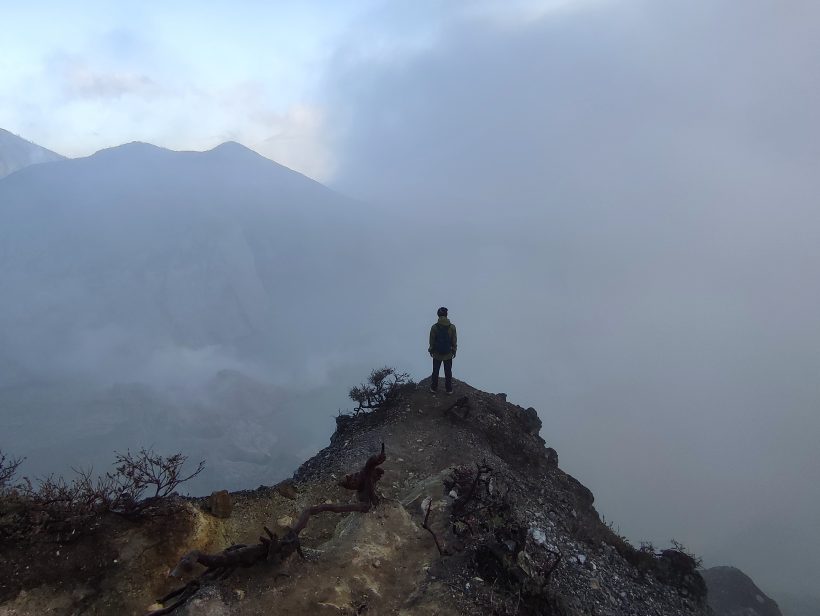
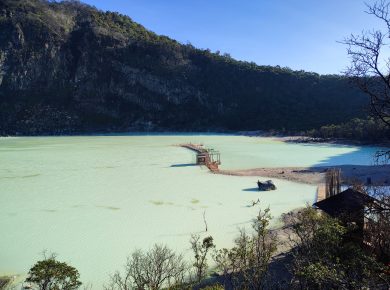
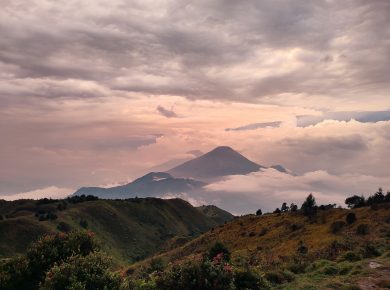
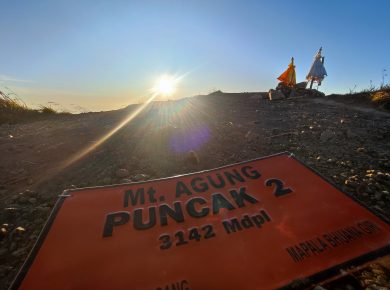

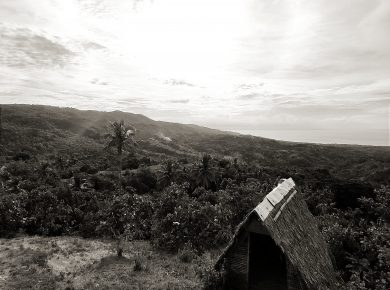
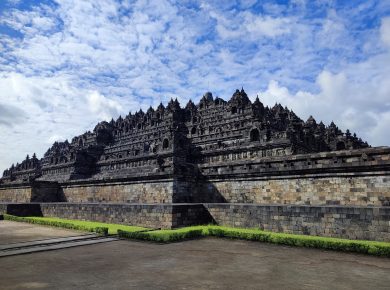


Great article! I really appreciate the clear and detailed insights you’ve provided on this topic. It’s always refreshing to read content that breaks things down so well, making it easy for readers to grasp even complex ideas. I also found the practical tips you’ve shared to be very helpful. Looking forward to more informative posts like this! Keep up the good work!
Thank you, that’s the best reward for us:)